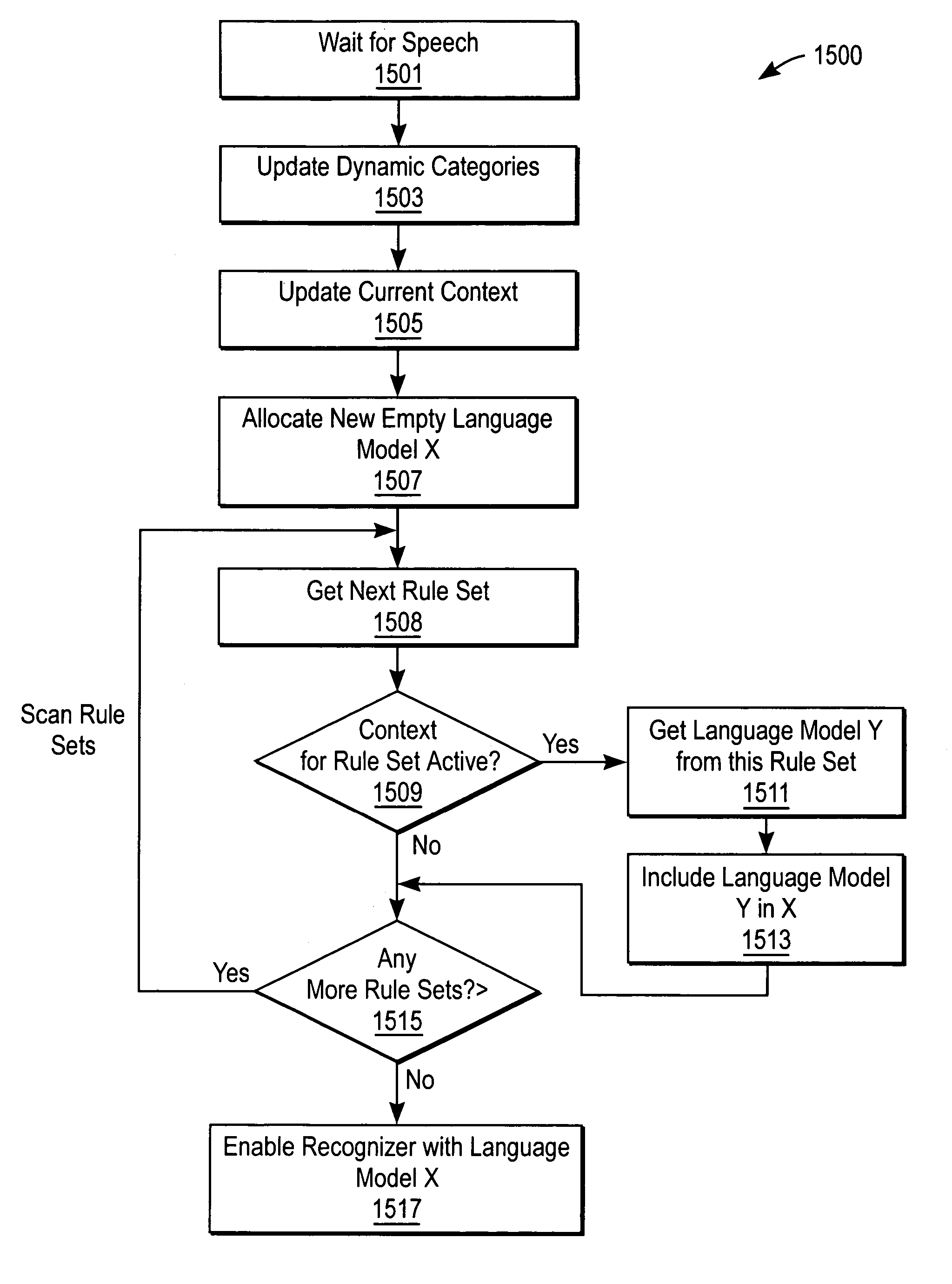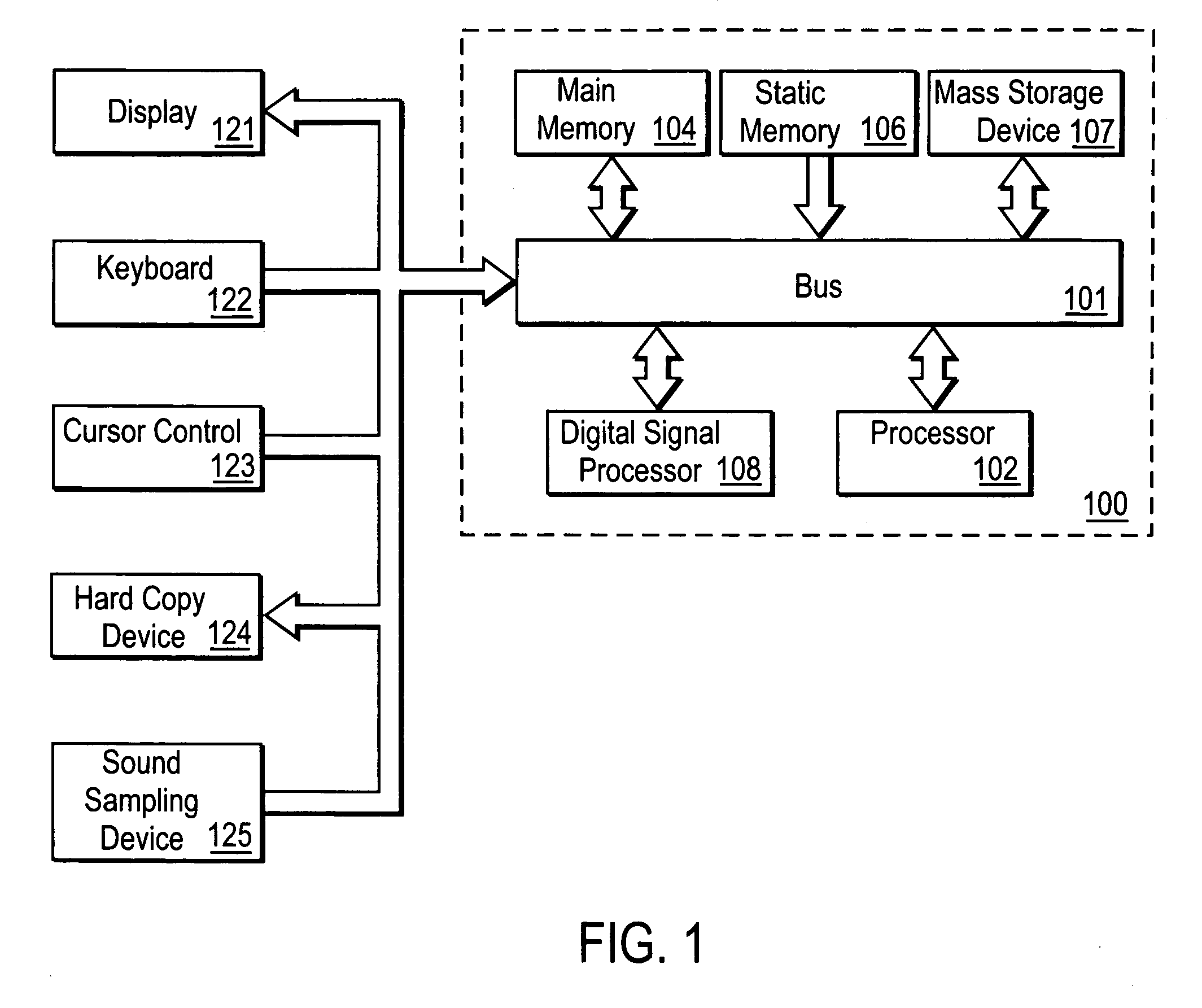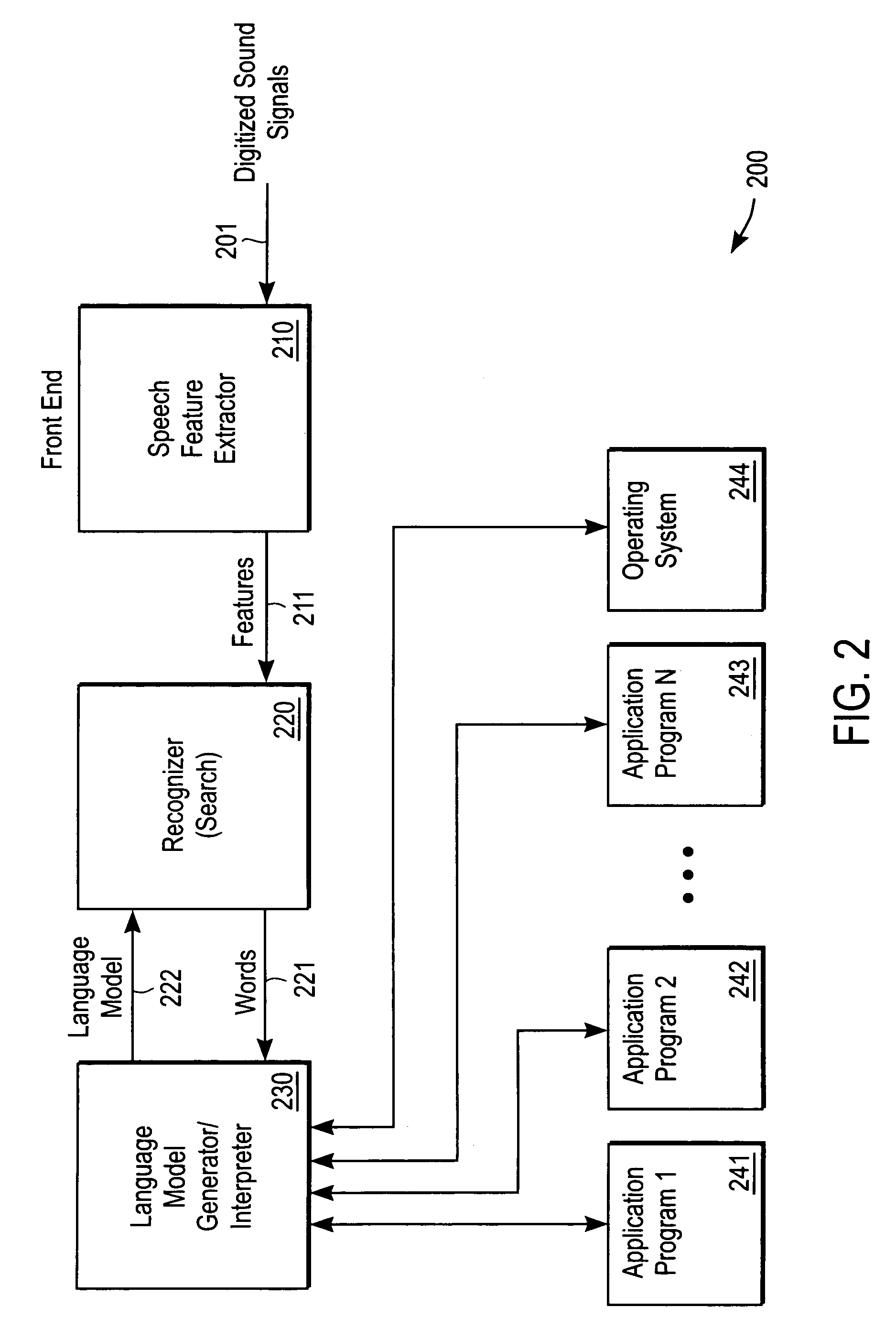Assigning meanings to utterances in a speech recognition system
a speech recognition and meaning technology, applied in the field of speech recognition systems, can solve the problems of difficulty in performing all the computation required, complexity of speech recognition algorithms, and insufficient performance of processors in personal computer systems
- Summary
- Abstract
- Description
- Claims
- Application Information
AI Technical Summary
Benefits of technology
Problems solved by technology
Method used
Image
Examples
Embodiment Construction
[0024]Methods and apparatus for a speech recognition system are described. In the following description, for the purposes of explanation, specific systems, components, and operating conventions are set forth in order to provide a thorough understanding of the present invention. It will be apparent, however, to one skilled in the art that the present invention may be practiced without these specific details. In other instances, well-known systems and components are discussed but not shown in detail in order to not unnecessarily obscure the present invention.
[0025]Referring to FIG. 1, the computer system upon which the preferred embodiment of the present invention is implemented is shown as 100. 100 comprises a bus or other communication means 101 for communicating information, and a processing means 102 coupled with bus 101 for processing information. System 100 further comprises a random access memory (RAM) or other dynamic storage device 104 (referred to as main memory), coupled to...
PUM
 Login to View More
Login to View More Abstract
Description
Claims
Application Information
 Login to View More
Login to View More - R&D
- Intellectual Property
- Life Sciences
- Materials
- Tech Scout
- Unparalleled Data Quality
- Higher Quality Content
- 60% Fewer Hallucinations
Browse by: Latest US Patents, China's latest patents, Technical Efficacy Thesaurus, Application Domain, Technology Topic, Popular Technical Reports.
© 2025 PatSnap. All rights reserved.Legal|Privacy policy|Modern Slavery Act Transparency Statement|Sitemap|About US| Contact US: help@patsnap.com



